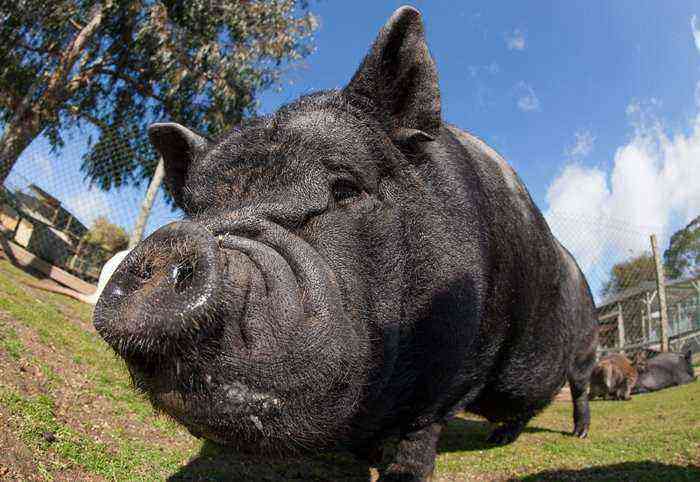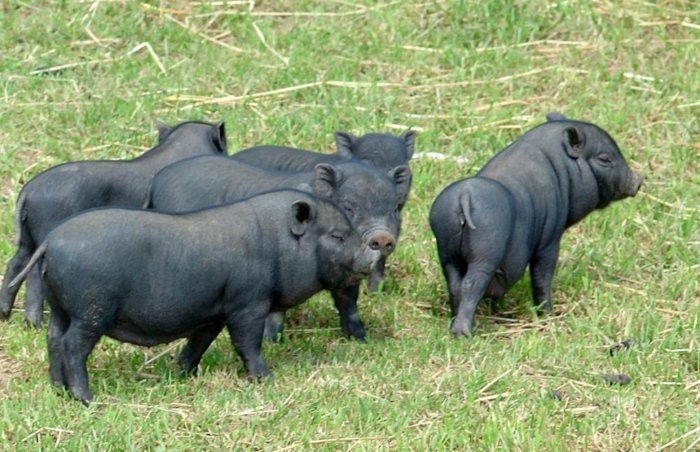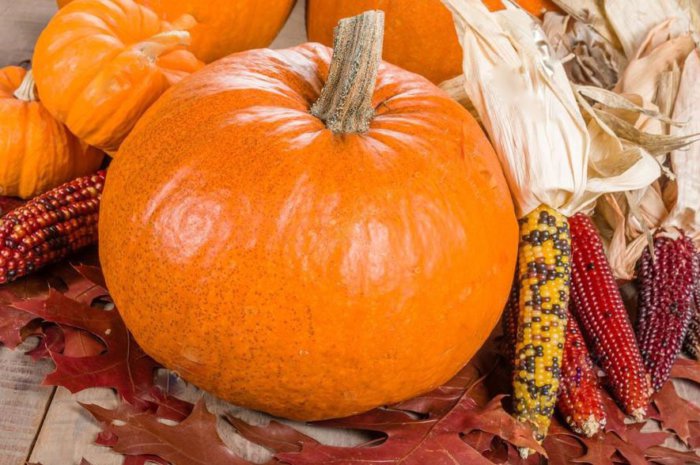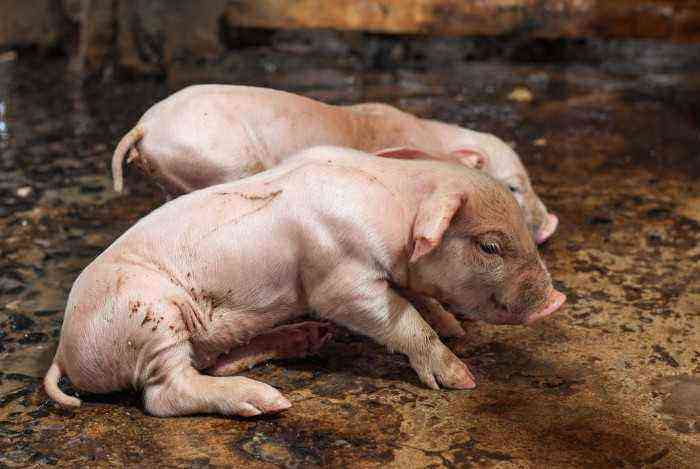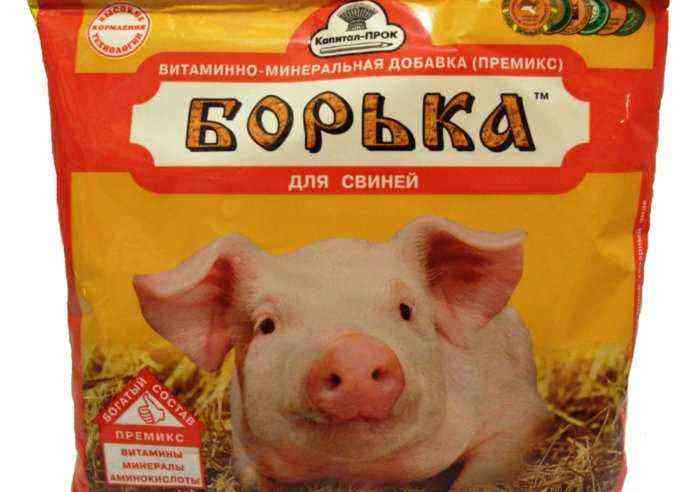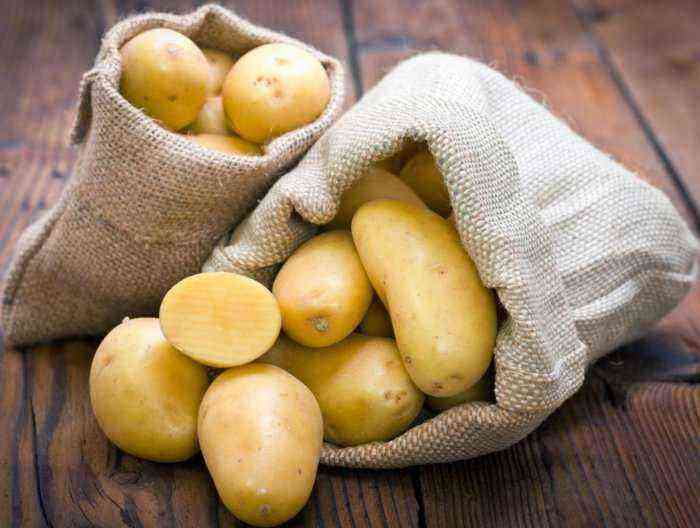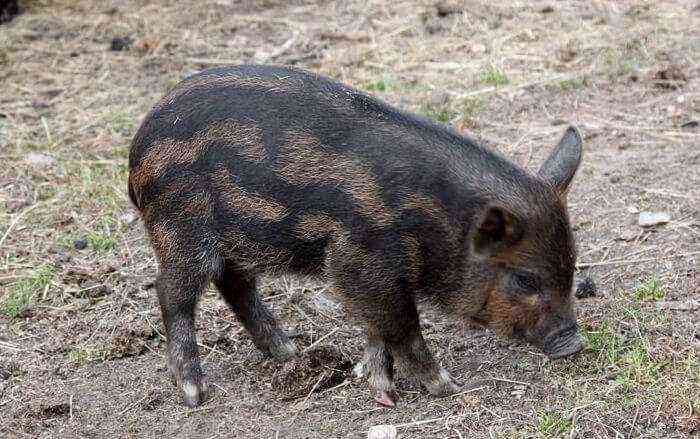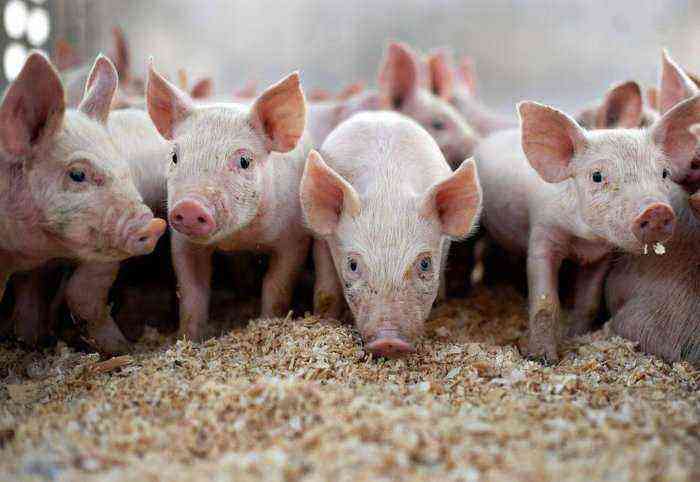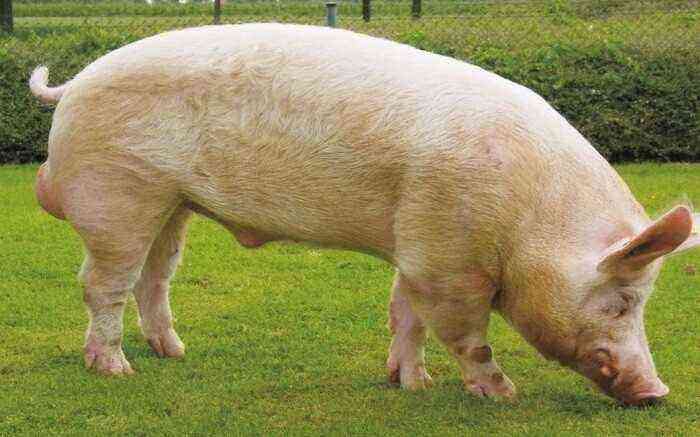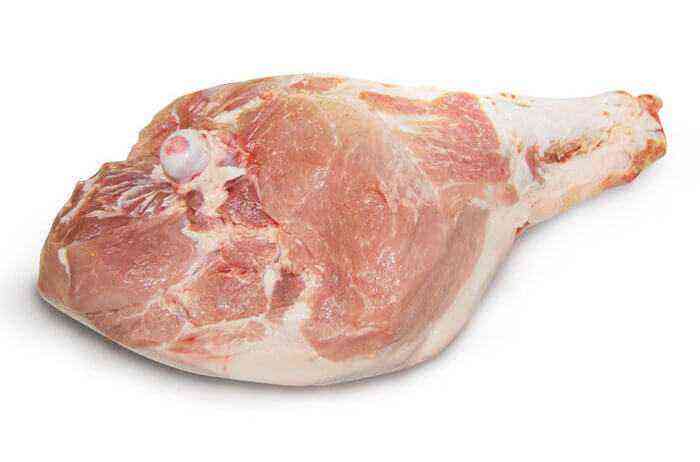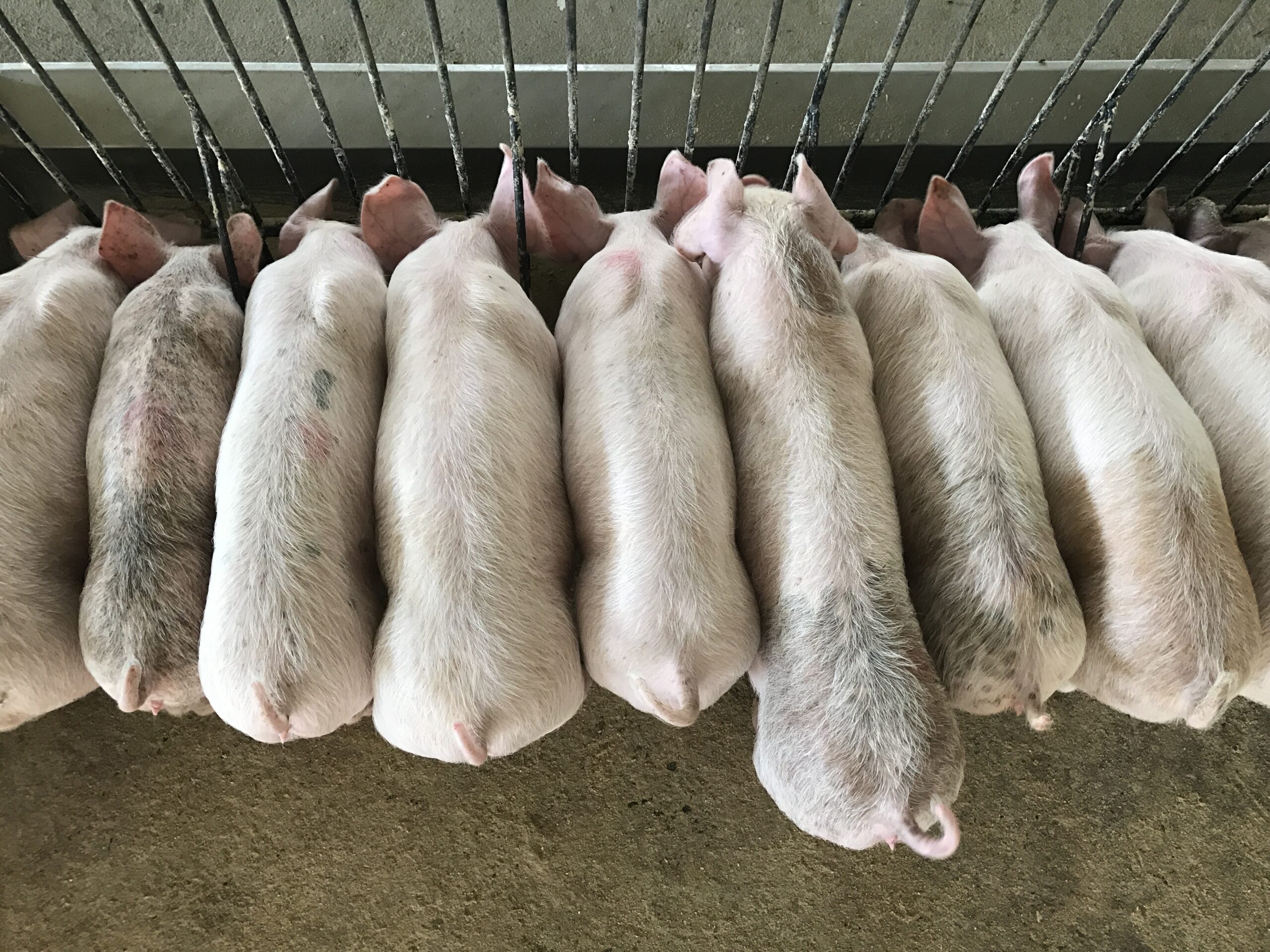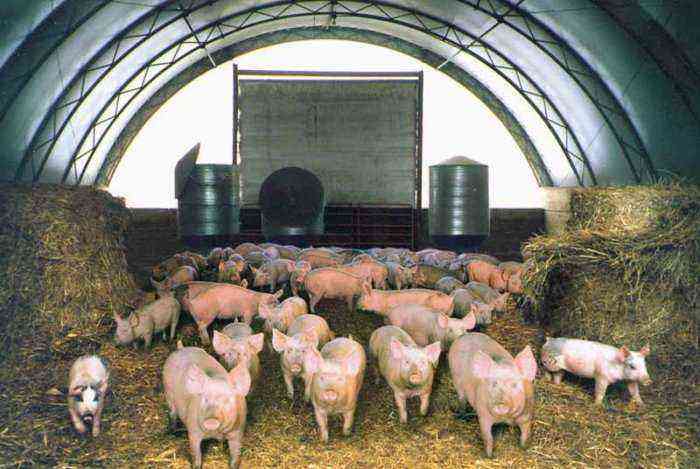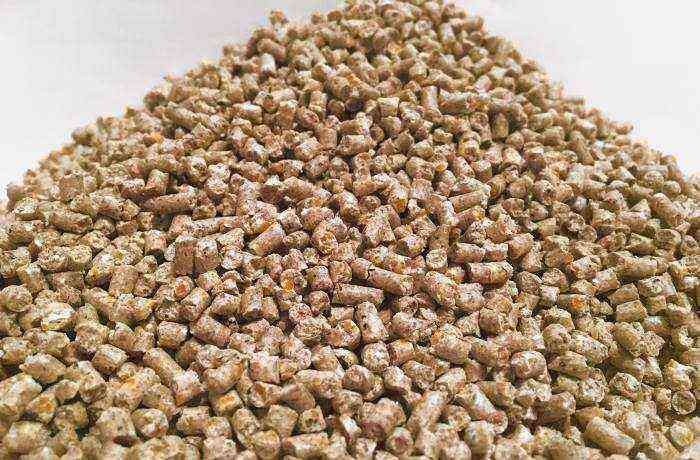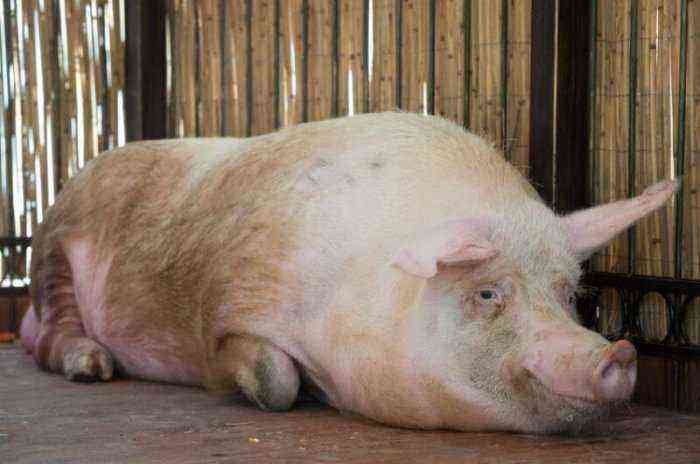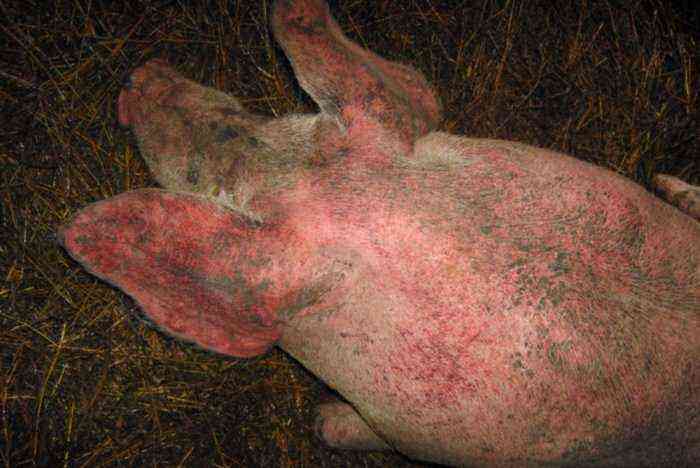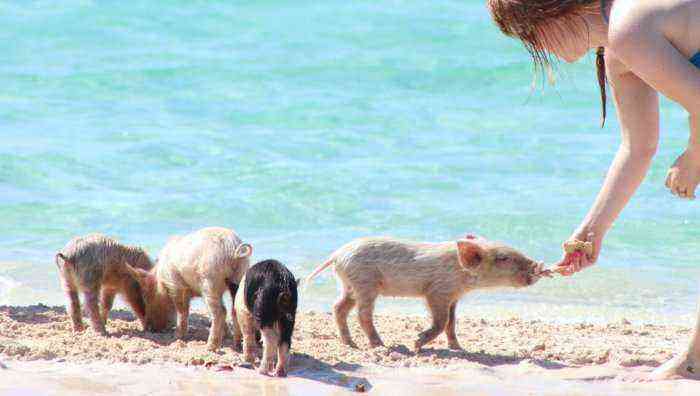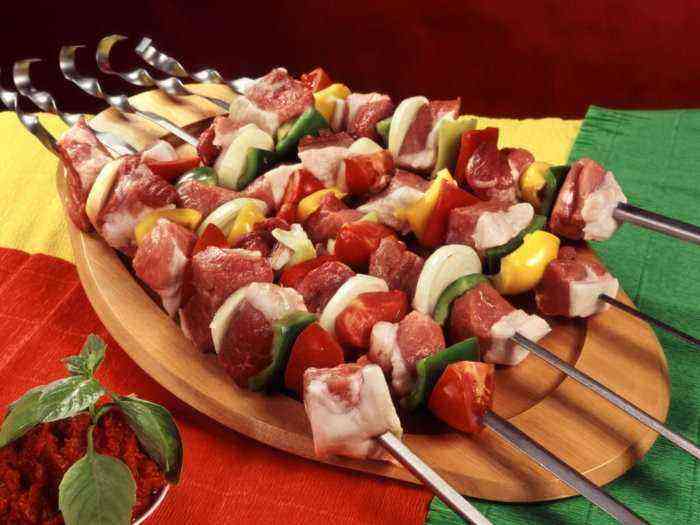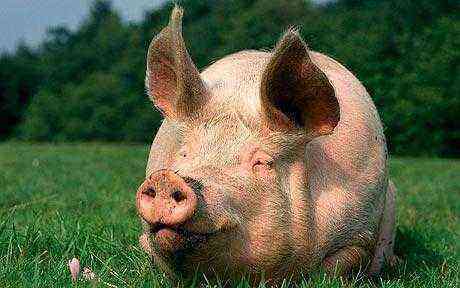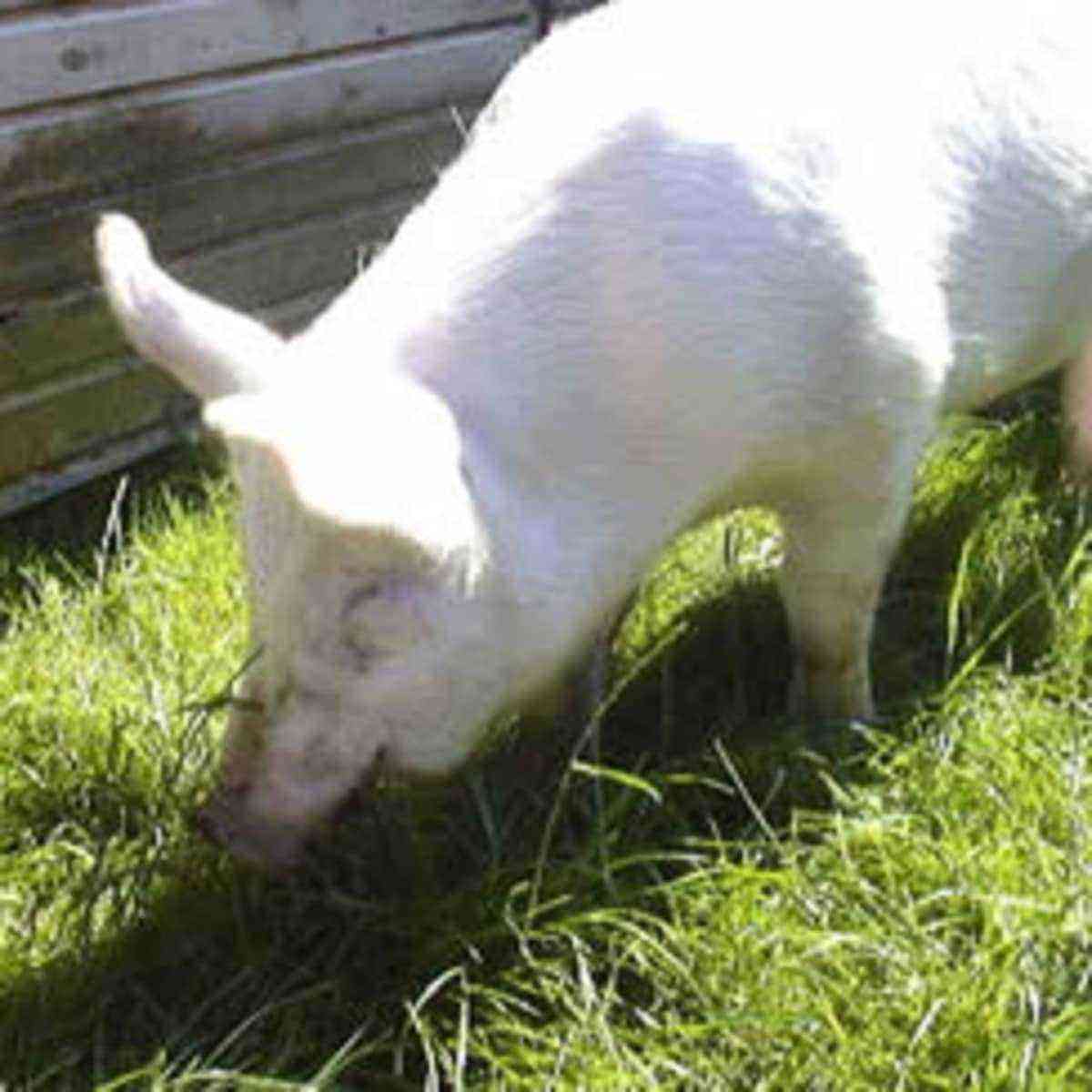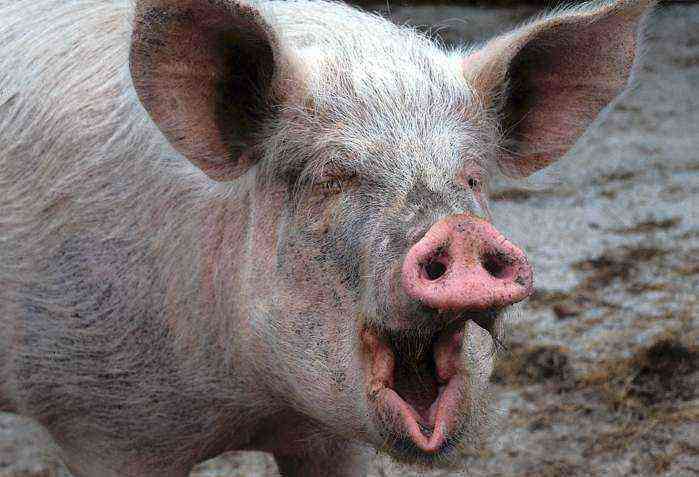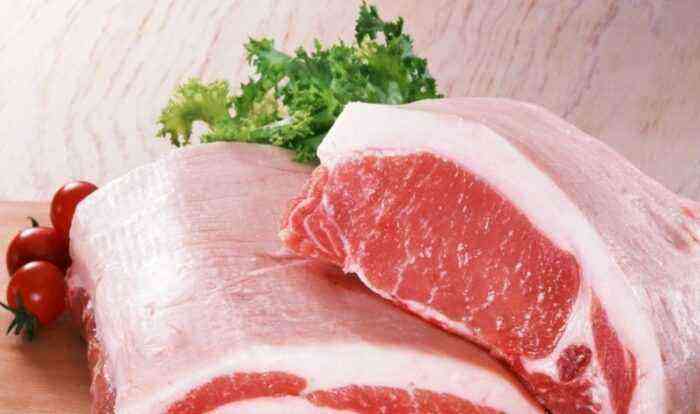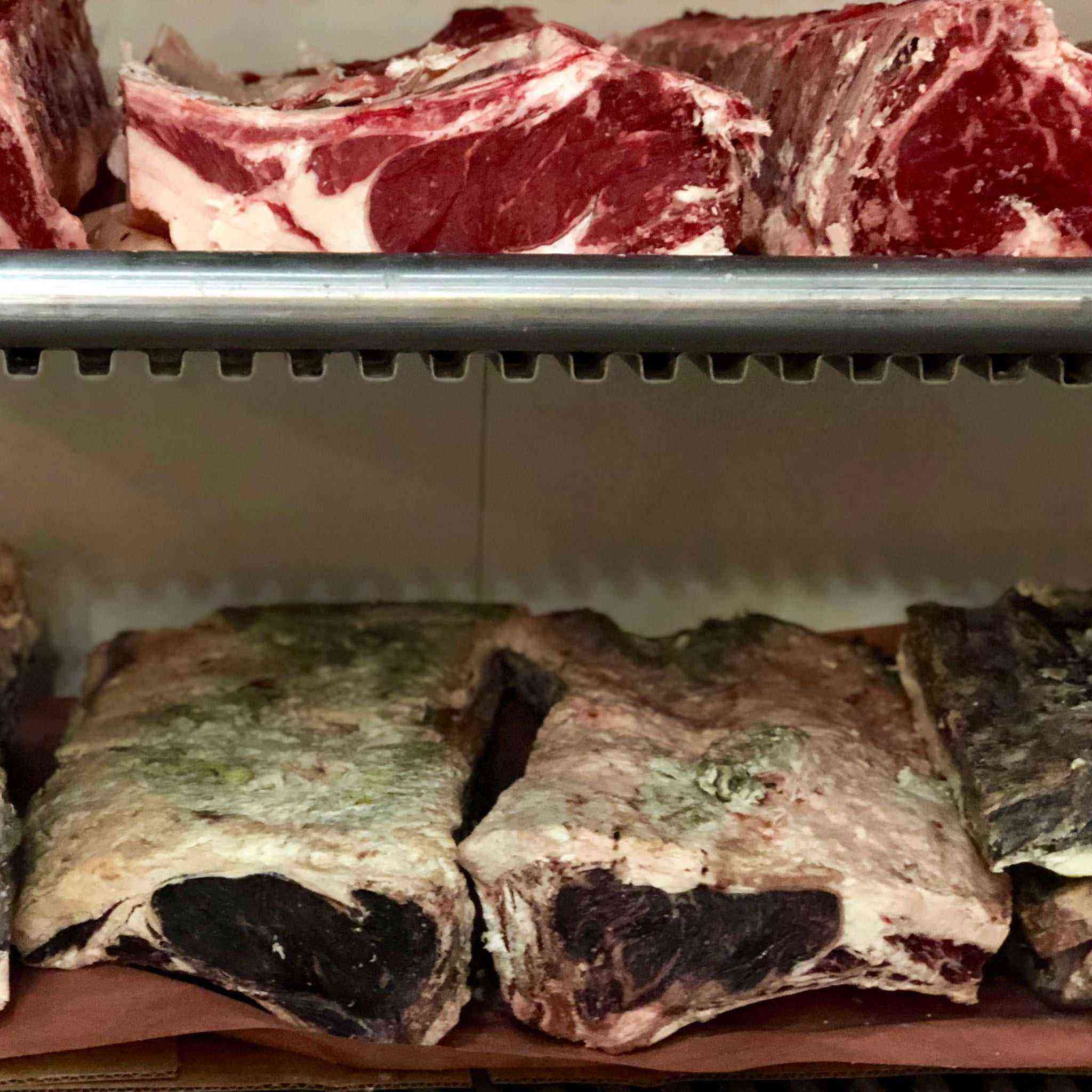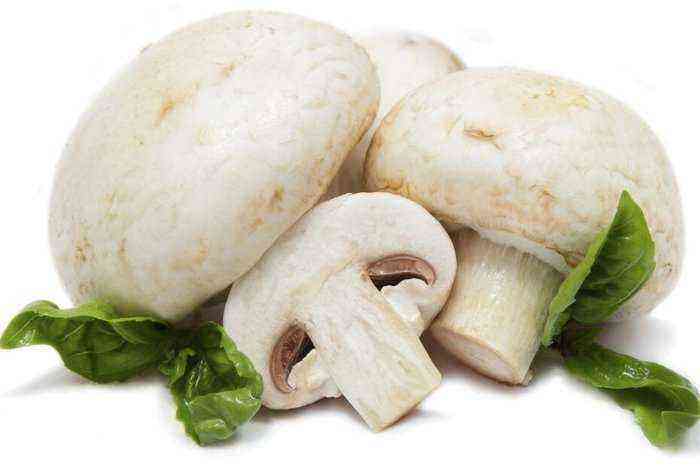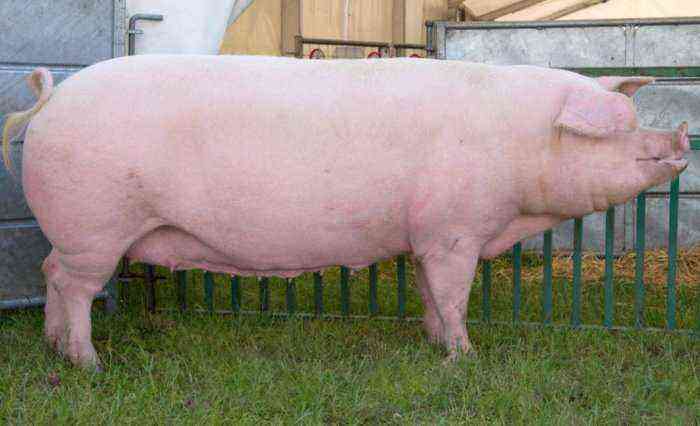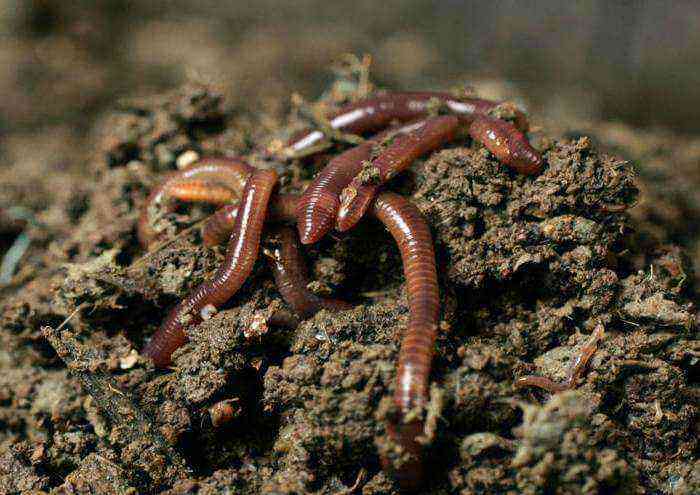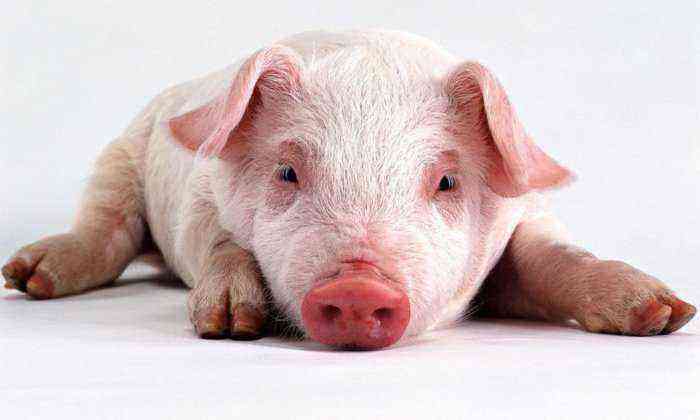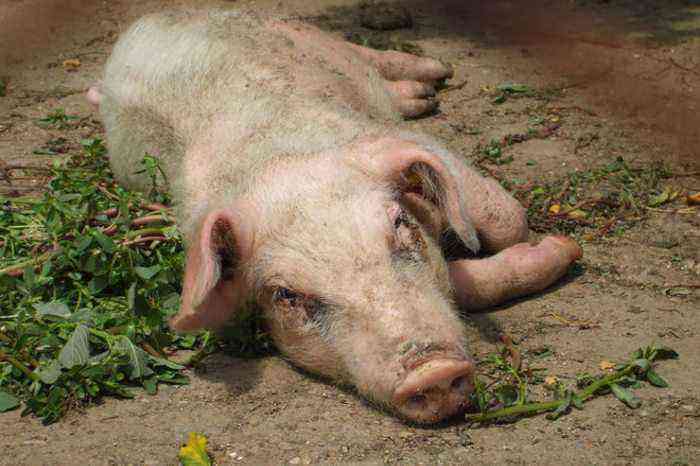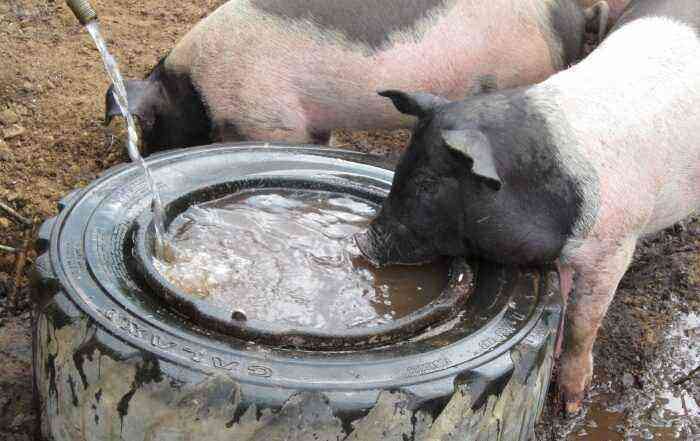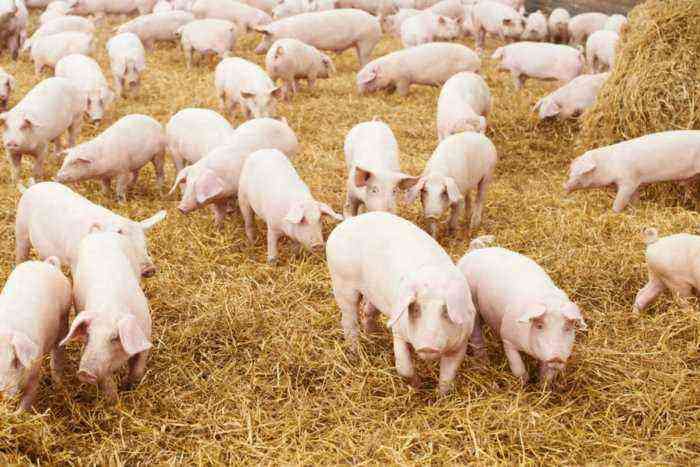The breed of Vietnamese bellied pigs is relatively new for domestic farmers. However, they have already managed to appreciate all the advantages of these animals, so the number of farms specializing in “Vietnamese” is growing every year.
Vietnamese bellied pig breed
The only recognized drawback of the Vietnamese bellies is their small size, but breeders are actively working to solve this problem. Breeding work is carried out by Canadian, Hungarian and Ukrainian specialists.
Reference. Outside of Southeast Asia, which is considered the birthplace of Vietnamese pigs, the breed was taken out only in 1985. A few years later, Russian farmers also became interested in it.
Business features
The main feature of breeding Vietnamese piglets is a quick payback. The growing cycle is 7 months, so they are great for seasonal fattening and year-round production. To organize your own meat farm, you will need to purchase 1-2 boars and at least 12 sows. An adult of this breed costs about 150 USD.
The advantage of the Vietnamese pig business is the high demand for fresh, high-quality meat. Usually, the search for distribution channels for products is not difficult: products are purchased by intermediaries who sell meat to the end consumer or meat processing plants. The average payback of a business is 2-3 years, providing the owner with a high profit.
Breed benefits
Vietnamese pig business is one of the most promising in the farming segment. This is due to the unique characteristics of the breed:
- the weight gain of the pig is 0,5 kg. in a day;
- weight of an adult 150 kg;
- slaughter yield reaches 75%;
- slaughter is carried out upon reaching the age of 6-7 months;
- 80% of the food of Vietnamese piglets is green fodder, which significantly reduces the cost of growing;
- high fecundity – 10-15 cubs are obtained in one farrowing, a pig can produce 2 offspring per year;
- early puberty – individuals are ready to breed at the age of 4 months.
Representatives of the breed have early puberty
Vietnamese bellied pigs are well adapted to frost. Maintaining a constant temperature of at least 20°C is only required for piglets under 90 days of age. The main weight gain in these animals occurs before 7 months of age. The body weight of such individuals reaches 80-100 kg. After that, the weight gain occurs practically due to the formation of fat.
An additional advantage of the breed is the taste of meat. It is very tender, juicy, has no specific smell, and is characterized by a low cholesterol content. Vietnamese pigs are famous for their powerful immunity, so the number of vaccinations required is minimal.
Breeding conditions
The Vietnamese Loose Belly is a compact breed; existing outbuildings can be used to grow livestock. Animals are very clean, organize a separate latrine. The waste products of Vietnamese pigs never get into the feeders and drinkers, so cleaning the pigsty is greatly simplified. Due to their high immunity and cleanliness, Vietnamese piglets are practically not susceptible to diseases, so they require minimal costs for veterinary care and vaccinations.
The main conditions for successful breeding are the prevention of diseases, the organization of sufficient space for walking animals, maintaining the required temperature in places where young animals and sows with a brood are kept, and a competent diet.
Business Registration
Breeding Vietnamese pigs as a business from a legal point of view is no different from any other: it is enough to register a peasant farm and pay a single agricultural tax, which involves a simplified system with a deduction of 6% of income. To register such a business, you need permission from the SES and the Fire Inspectorate.
Registration requires permission from the SES
You will also need a certificate confirming the veterinary well-being and the quality of the products. This document is issued by the local veterinary control service.
How to choose young
When choosing young animals for further breeding, it is important to find a competent breeder who correctly crosses, avoiding inbreeding. Offspring from close relatives often have low immunity, poorly gaining weight and unable to reproduce. There should be several boars in a breeding farm. Usual calculation: 1 male per 25 sows. In this case, several breeding lines are provided, which can later be crossed with each other.
If piglets are purchased not only for rearing for slaughter, but also for subsequent breeding, it is advisable to buy them from different farms. The cost of one individual is on average 30 USD.
When choosing piglets, you should pay attention to the main signs of a healthy animal:
- smooth coat;
- strong body with developed muscles;
- wide setting of the legs;
- large head;
- shiny eyes;
- a good appetite;
- high mobility and activity.
Young Vietnamese breed
The room
The room that is allocated for the arrangement of the pigsty must have a ventilation and heating system. The area is selected at the rate of 2 sq.m. per pig, 3 sq.m. for one boar and 4 sq.m. for a sow with a brood. Also, additional areas are allocated for feeders and drinkers, technical rooms for inventory, automated care systems.
Note. When seasonally raising pigs for slaughter without breeding offspring, pigsties without a heating system can be used, since Vietnamese pigs easily tolerate a decrease in temperature when autumn comes.
A draft is not allowed in the pigsty, the floor is covered with a wooden platform or covered with bedding. Directly near the places where the pigs are kept, a walking area is provided. Its area must be at least 100 sq.m. The whole area is fenced, it is equipped with a pool area of 4 sq.m. and up to 30 cm deep, sunshades, logs or tree trunks, on which pigs scratch their skin.
Feeding
The basis of the diet of the Vietnamese pig is grass. Fresh and dried vegetation makes up to 80% of the total food volume. The optimal balance of nutrition is achieved with the intake of 14% protein products, 2-3% fat and up to 15% fiber. Due to the accelerated digestion process, Vietnamese fold pigs eat up to 3 times a day. In addition to grass, vegetables, legumes and grains, hay should be consumed.
pumpkin and corn
In winter, pigs are fed with pumpkin, apples, and corn. In summer and autumn, when the choice of vegetables and fruits is more diverse, pigs are also given zucchini, pears, young hay. It is not recommended to introduce roughage, straw, fodder beets into the diet of this breed, as they are poorly digested and cause poor health. When using compound feed, it is mixed with bran, and cereals are given in ground form. Barley and corn should account for no more than 10% of the total food volume, as these crops provoke the appearance of unwanted body fat.
Purchase of feed
It is advantageous to purchase feed from wholesale suppliers. The use of automatic feeding systems puts forward the requirement to purchase feed in advance to fill the silos. A stock of compound feed and grain is also being formed to avoid shortages in case of unplanned interruptions in supplies.
Staff
With a small livestock of up to 10 pigs, the farmer usually manages on his own and does not need hired employees. With more numerous production, the calculation of the number of personnel is carried out from the proportion of 150 heads of 3-4 employees. Their duties include feeding the animals, cleaning the pigsty, caring for newborn piglets and the sow. Also, the farm staff must provide for a rate for a veterinarian and an accountant (the services of these specialists can be provided out of state, under an agreement).
Sales
To search for distribution channels, it is necessary to determine the direction of the pig farm. She can specialize exclusively in the production of meat products and the sale of piglets for further feeding. You can also sell live weight pigs, raise breeding individuals for sale and subsequent breeding.
Pork for sale
Meat products in the presence of a certificate of veterinary control are sold directly to the final consumer, wholesale buyers or meat processing facilities. With a livestock of 100 pigs, it is profitable to open workshops for the production of semi-finished products.
Business Startup Costs
To estimate the costs of opening a pig farm, the following questions should be considered:
- Construction of a pigsty. The cost of a pig farm is determined by the scale of production, the availability of suitable premises for keeping livestock in the ownership of the entrepreneur.
- Livestock purchase. As a rule, a farm purchases several boars and 3-4 dozen sows from different farms. The total costs for these purposes average 5-6 thousand. c.u.
- The cost of feeding a pig on average costs 2 USD. That is, about 60 USD per month will be required.
- Purchase of equipment. This includes automatic feed systems, feeders, drinkers, tools for cleaning the pigsty, caring for animals. For this category of costs, a minimum of 1000 USD is allocated.
- Associated costs. For unforeseen expenses, a reserve of 500 USD is provided.
Despite the rather large investments, the business of breeding Vietnamese piglets belongs to the category of the most profitable in the agricultural segment. If suitable premises are available, the initial costs will be about 10 USD, which will pay off after the first sale. In the presence of capital investments in construction, the payback period increases to 000-2 years.
